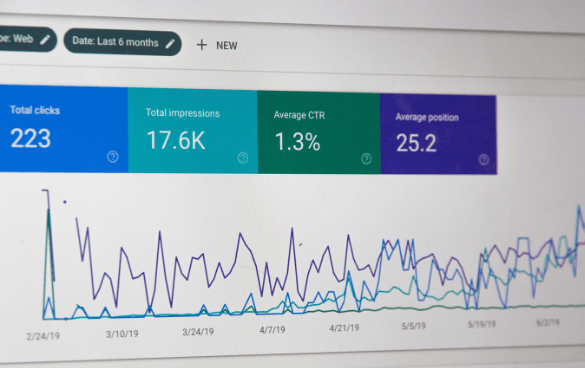How to Leverage Remarketing In Google Analytics for Your Business
How to Leverage Remarketing In Google Analytics for Your Business
Blog Article
Utilizing Remarketing in Google Analytics: A Comprehensive Overview
Harnessing remarketing in Google Analytics supplies companies a strategic side in getting to out to prospective customers. This overview will certainly lose light on the necessary steps entailed in taking advantage of the complete potential of remarketing in Google Analytics, leading to boosted advertising and marketing outcomes.
Understanding Remarketing in Google Analytics
Remarketing in Google Analytics enables companies to purposefully target individuals who have formerly communicated with their website or mobile application. By leveraging data from Google Analytics, services can develop customized remarketing listings based upon user habits, such as web pages gone to, activities taken, or particular goals attained. This powerful tool allows organizations to re-engage with individuals that have revealed passion in their services or products, inevitably enhancing the chance of conversion.
Understanding the various kinds of remarketing techniques is crucial for a successful project - What Is “Remarketing” In Google Analytics?. Google Analytics supplies various options, including common remarketing, vibrant remarketing, and remarketing lists for search ads (RLSA) Each type offers an unique function and can be customized to satisfy certain advertising and marketing purposes
Furthermore, analyzing the performance of remarketing campaigns is necessary for maximizing results. Google Analytics offers useful understandings right into the efficiency of various remarketing approaches, permitting companies to make data-driven decisions and fine-tune their targeting approach. By continuously keeping an eye on and changing remarketing efforts based upon analytics data, businesses can make the most of ROI and drive success in their marketing initiatives.
Establishing Remarketing Campaigns

After establishing audience listings, the following step is to connect Google Analytics with Google Advertisements. By linking these two platforms, businesses can seamlessly move audience listings from Google Analytics to Google Ads for remarketing objectives. This combination enables more specific targeting and far better project efficiency.
Once the accounts are connected, services can create remarketing projects in Google Ads making use of the audience details previously specified in Google Analytics. These campaigns can be tailored with details ad creatives, messaging, and bidding process methods to effectively re-engage with previous site visitors and drive conversions. By complying with these actions, services can leverage the power of remarketing to boost their advertising and marketing efforts and increase ROI.
Making Use Of Target Market Division Methods

Predefined segments in Google Analytics permit you to swiftly assess typical target market groups like new customers, returning individuals, or customers who finished a particular goal on your internet site. Custom sectors, on the other hand, enable you to produce special sectors based upon particular standards that are important to your business goals. Dynamic remarketing lists immediately readjust based on customer actions, revealing individualized ads to users who have communicated with your site specifically means.
Studying Remarketing Efficiency Metrics
Upon assessing the efficiency of remarketing campaigns in Google Analytics, the evaluation of key performance metrics gives useful insights into audience interaction and conversion rates. By delving into metrics such as click-through prices (CTR), conversion prices, cost per acquisition (CPA), and return on ad invest (ROAS), marketers can assess the success of their remarketing initiatives. CTR suggests the portion of individuals that clicked on the advertisement after watching it, showing the advertisement's importance and charm. Conversion prices determine the percentage of customers that completed a wanted activity, such as buying, after clicking on the ad. CPA discloses the average price sustained for every conversion, helping analyze campaign success. ROAS, on the other hand, quantifies the earnings created for each dollar invested on marketing. Evaluating these metrics makes it possible for marketing professionals to optimize projects, fine-tune audience targeting, and allot budget plans effectively to boost overall remarketing efficiency.
Enhancing Remarketing Strategies
When refining remarketing methods in Google Analytics, concentrating on audience segmentation is extremely important for achieving campaign success. By splitting your audience right into specific segments based upon their actions, demographics, or interests, you can tailor your ads extra efficiently to every team. This targeted method increases the possibility of engaging customers who have currently shown rate of interest in your solutions or items, leading to higher conversion prices.
Another crucial facet of optimizing remarketing approaches is constantly testing and refining your projects (What Is “Remarketing” In Google Analytics?). pop over to this site A/B screening different advertisement creatives, messaging, or offers can help you determine what reverberates finest with your target market and drives one of the most conversions. By evaluating the efficiency of these tests in Google Analytics, you can make data-driven decisions to optimize your remarketing efforts additionally
In addition, leveraging vibrant remarketing can considerably boost your project results. This function permits you to show customized ads to individuals based upon their previous interactions with your website, showcasing products or solutions they have formerly seen. By supplying tailored content to individuals based upon their rate of interests and habits, dynamic remarketing can help increase engagement and drive conversions.
Verdict
In final thought, utilizing remarketing in Google Analytics is a tactical method pop over to this site to target users that have previously engaged with a site. By producing personalized audience checklists and utilizing target market division approaches, services can optimize remarketing advocate boosted conversion prices. Evaluating efficiency metrics and constantly optimizing approaches are critical for taking full advantage of the efficiency of remarketing efforts.
Google Analytics supplies different alternatives, including typical remarketing, dynamic remarketing, and remarketing checklists for search ads (RLSA)After setting up target market checklists, the next action is to link Google Analytics with Google Ads. By linking these 2 platforms, organizations can effortlessly transfer target market listings from Google Analytics to Google Ads for remarketing functions.Once the accounts are linked, businesses can develop remarketing projects in Google Advertisements utilizing the audience lists previously specified in Google Analytics.When see this page refining remarketing methods in Google Analytics, focusing on audience division is critical for attaining campaign success.
Report this page